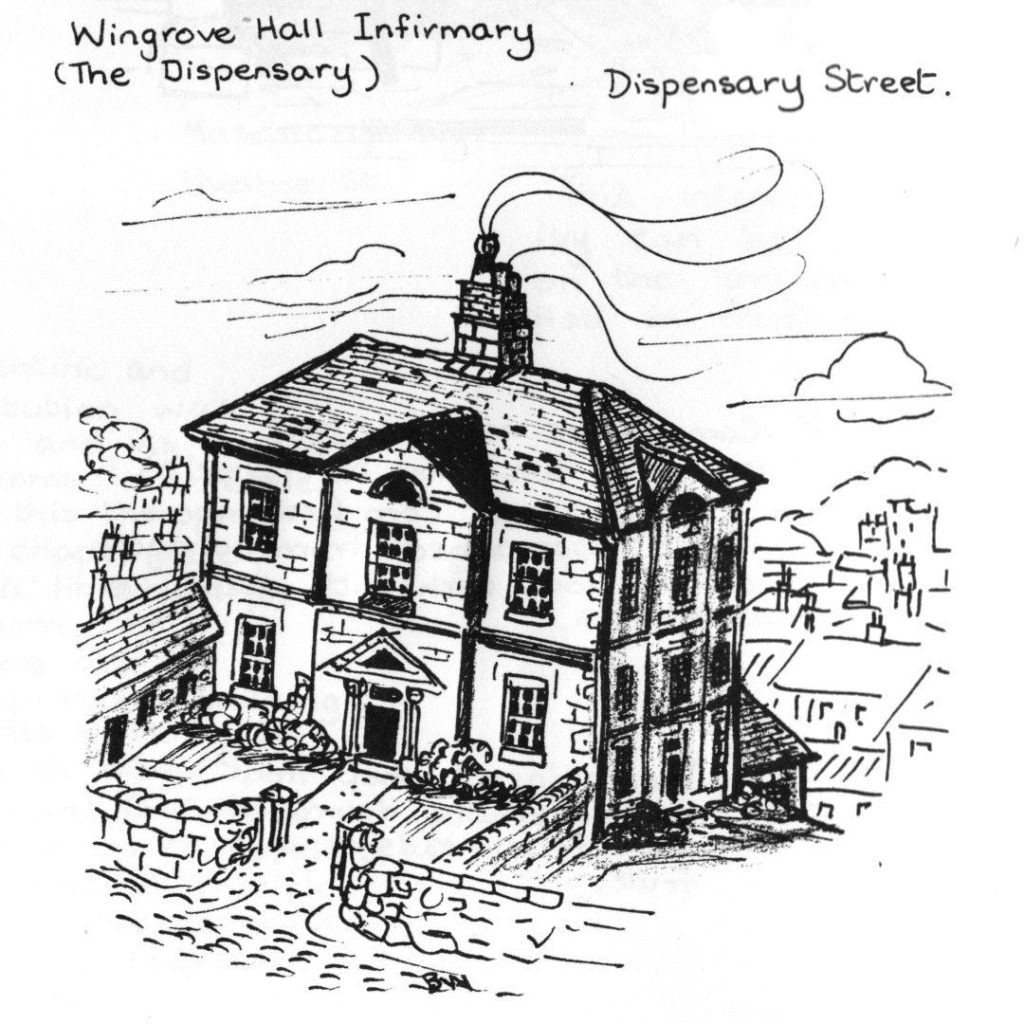Nine days before the battle of Waterloo, in June 1815, Wm. Burrell Esq and John Lambert, a local banker, called a public meeting in the Town Hall to agree on the establishment of a Dispensary to administer advice and medicine to the poor, to promote vaccination against smallpox and to provide the greater application of surgery. Donations in the first year amounted to £2,081 and a suitable house was found in Fenkle Street. In 1816, 258 patients were treated and it was realised that larger premises were needed.
In 1819 Wingrove Hall was bought from Wm Bolton, a brewer, for £900. It was situated on the “backway” (now Dispensary Street) opposite the present bowling green, a healthy and convenient location. The building was Georgian in style faced in local ashlar stone. The ground floor housed a dispensing room and a committee room, behind which were rooms for the resident House Surgeon, the Matron and the kitchen. Surgical, medical and fever wards were on the first floor.

The staff included two Honorary Physicians and two Surgeons, a resident House Surgeon, the Matron and nurses, and various domestic servants. Governors, who each paid a yearly subscription of one guinea, provided the finance in return for the right to recommend one patient for admission or treatment at any one time. Surrounding parishes also subscribed to obtain the same privileges. An executive committee of fifteen governors was elected annually.
The job of the House Surgeon was to care for the in-patients and to consult in the Dispensary – freely – to the poor; should any of them be ill at home, the Houseman was to make a home visit. This was ideal training for a young doctor before moving on to work in a medical practice.
On 23 September 1849 a single case of cholera was diagnosed, followed by twelve more in the next 24 hours. All trade and social life came to a stop. Tar barrels blazed in the streets, all lanes were cleared and white-washed and houses were fumigated. By the time the last case occurred, on 23 centre of Alnwick (now Morrisons), but suspicions were growing that the new store was designed to handle a much wider range than just food and drink.
October, 136 people had died; most of them were from houses in Clayport Street. The Dispensary was used throughout the epidemic only for cholera cases. Afterwards, the house was disinfected and re-opened under the new name of Alnwick Infirmary. It earned the tribute by G. Tate in his 1868 History of Alnwick that: “no institution has been of more benefit to the poor of the town than Alnwick Infirmary”.
The Infirmary continued in use despite being deemed “inadequate” in about 1890, and it took another twenty years before it was moved to new premises next to the Column Field. Wingrove Hall returned to domestic use until, eventually, its foundations were affected by nearby excavations and the fine old Georgian house was pulled down.
The above article by Dr. John Johnson was published in the November 1995 edition of the Alnwick Civic Society’s news-sheet. We are indebted to G Tate’s History of Alnwick for much of the detail of this article, and to Mrs Barbara Woodhouse for her drawing of the Old Infirmary building.